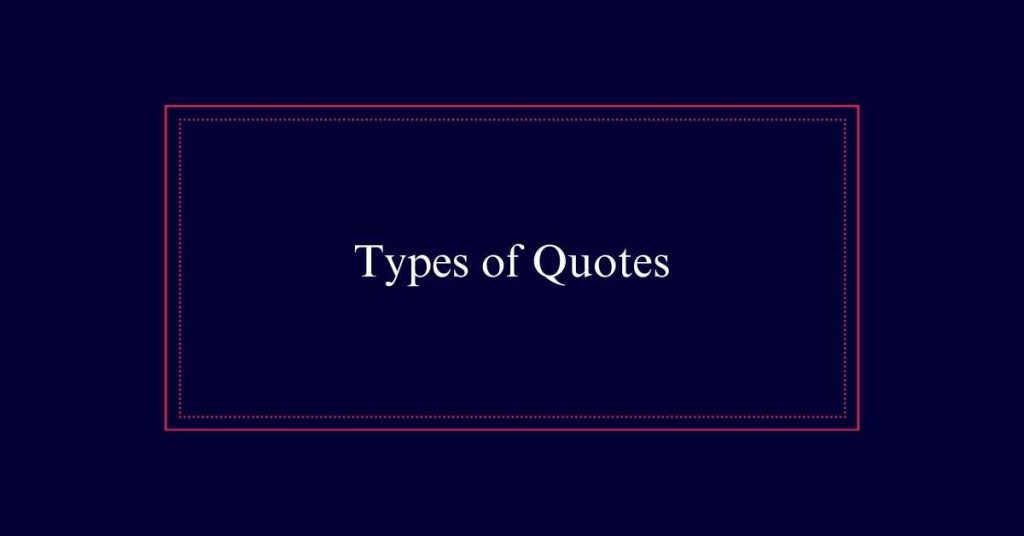Types of Quotes
Understanding the different types of quotes is essential for effective writing. Direct quotes reproduce an author’s original words exactly, while indirect quotes paraphrase the ideas. Block quotes are used for longer excerpts and are set apart from the main text. Quotation marks in dialogue highlight spoken words, and they can also indicate thoughts. Using quotes correctly enhances clarity and credibility in your writing. Accurate citation is important to avoid plagiarism and uphold scholarly integrity.
Direct Quotes
Direct quotes involve using the exact words from a source, enclosed in quotation marks, with proper citation. They are crucial for accurately representing an author’s original ideas and lending authority to your writing. Quotes must be verbatim, maintaining the original wording and punctuation.
To indicate omitted words within a quote, use ellipses (…). Always include a page number or other location reference for appropriate citation. This practice guarantees that readers can verify the source material.
Using direct quotes effectively can enhance the credibility of your work. However, balance is key; overuse can overwhelm your voice. Integrate quotes seamlessly to support your arguments or provide evidence, ensuring they add value to your writing.
Indirect Quotes
Indirect quotes allow you to convey an author’s ideas in your own words without using quotation marks. This method, known as paraphrasing, requires retaining the original meaning while expressing it with different wording.
Indirect quotes are beneficial for simplifying complex ideas or integrating sources smoothly into your text. Even though quotation marks are not used, proper citation is still essential to credit the original author and avoid plagiarism.

Indirect quotes should be accurate and fair representations of the source material. This approach helps maintain the flow of your writing and allows you to highlight the most relevant points.
Using indirect quotes effectively supports your arguments and enhances your credibility.
Block Quotes
While indirect quotes allow for paraphrasing, block quotes are used for longer excerpts that require exact wording. Block quotes are typically utilized when the quoted material exceeds 100 words.
They are set apart from the main text by indenting the margins on both sides. This format highlights the significance of the quoted passage without the need for additional quotation marks. It is crucial to include proper citations to attribute the source accurately.
The indentation visually distinguishes the block quote from your own writing, ensuring clarity for the reader. Block quotes should be used sparingly to maintain the flow and originality of your content.
Proper formatting enhances readability and guarantees that the quoted material stands out.
Quotation Marks in Dialogue
Quotation marks play an essential role in distinguishing spoken words in dialogue. They enclose the exact words spoken by a character, making it clear what is dialogue and what is narration.
For example, ‘She said, ‘I’ll be there at noon.’ Here, the spoken words are within single quotation marks because they are already inside double quotation marks.
Proper use of quotation marks guarantees clarity in writing. An author’s words, such as ‘he said’ or ‘she replied,’ are placed outside the quotation marks.
When a character’s speech spans multiple paragraphs, open quotes are placed at the beginning of each paragraph, with closing quotes only at the end. This helps maintain the flow of dialogue without confusion.
Quotation Marks for Thoughts
When conveying a character’s thoughts, writers often face the challenge of deciding whether to use quotation marks. Some prefer to use quotation marks to signal a character’s internal dialogue, treating it like spoken words. Others opt for italics to distinguish thoughts from speech and narration. This method avoids confusion and maintains clarity.
Additionally, some writers use neither quotation marks nor italics, instead relying on clear narrative cues to indicate thoughts. Each approach has its merits and can be effective depending on the context and writing style. The key is consistency throughout the text.
Properly conveying thoughts enhances character development and reader engagement, making it an essential aspect of writing.
Long Speeches
Crafting long speeches in writing requires special attention to formatting and clarity. When a character or speaker delivers an extended monologue, it is crucial to maintain readability.
Long speeches spanning multiple paragraphs do not need closing quotation marks at the end of each paragraph. Instead, place an opening quotation mark at the beginning of each new paragraph. This helps readers follow the speech easily.
For nonfiction, clarity is paramount. Break the speech into manageable chunks, ensuring each paragraph conveys a clear idea. Avoid overwhelming the reader with dense text. Proper punctuation and formatting help in maintaining the flow.
Use these techniques to guarantee that long speeches remain effective and engaging, preserving the intended impact and meaning.
Quotes in Writing
Incorporating quotes effectively can greatly enhance the depth and credibility of your writing. Direct quotes provide exact wording from a source, lending authenticity. Use quotation marks and proper citations to attribute the source.
Indirect quotes paraphrase the original text, conveying the essence in your own words, still requiring a citation. Block quotes are for lengthy excerpts over 100 words and are formatted with indented margins, without quotation marks.
Quotations should be integrated smoothly into your writing to support arguments or provide evidence. Avoid overusing quotes to maintain a balance with your original content. Proper citation of any quote, whether direct or indirect, safeguards against plagiarism and strengthens the reliability of your work.






